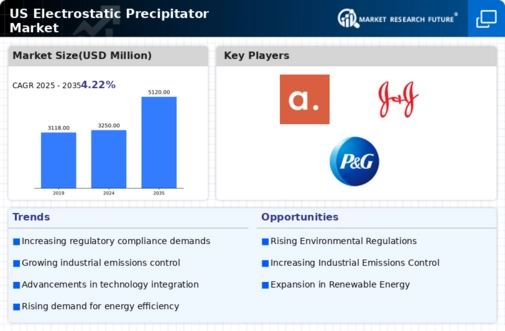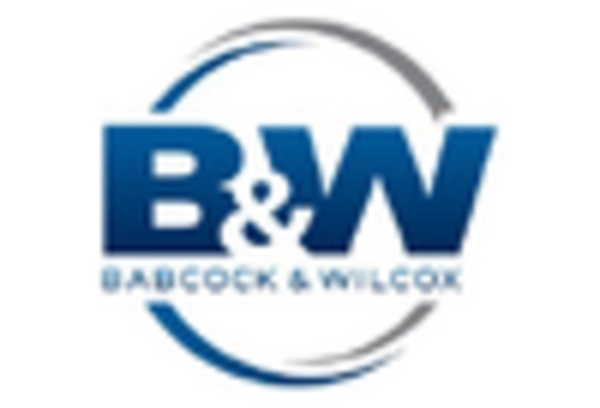Growing Awareness of Health Impacts
The electrostatic precipitator market is also driven by the growing awareness of the health impacts associated with air pollution. Public concern regarding respiratory diseases and other health issues linked to poor air quality is prompting both consumers and industries to seek solutions. The American Lung Association has reported that air pollution contributes to over 200,000 premature deaths annually in the US. This alarming statistic is leading industries to adopt electrostatic precipitators as a means to improve air quality and protect public health. Consequently, the market is likely to witness increased investments as companies strive to enhance their environmental responsibility.
Increasing Environmental Regulations
The electrostatic precipitator market is experiencing growth due to the increasing stringency of environmental regulations in the US. Regulatory bodies are imposing stricter limits on emissions from industrial processes, particularly in sectors such as power generation and manufacturing. This has led to a heightened demand for efficient air pollution control technologies, including electrostatic precipitators. In 2025, the US Environmental Protection Agency (EPA) reported that industries must reduce particulate matter emissions by at least 30% to comply with new standards. Consequently, companies are investing in electrostatic precipitators to meet these requirements, thereby driving market expansion.
Rising Industrialization and Urbanization
The electrostatic precipitator market is significantly influenced by the ongoing industrialization and urbanization trends in the US. As urban areas expand and industries proliferate, the demand for effective air pollution control systems becomes paramount. The US Census Bureau indicates that urban populations are projected to increase by 15% by 2030, leading to higher emissions from transportation and industrial activities. This urban growth necessitates the installation of electrostatic precipitators to mitigate air quality issues. The market is likely to benefit from this trend as industries seek to adopt cleaner technologies to comply with environmental standards.
Technological Innovations in Air Quality Control
Technological innovations are playing a crucial role in shaping the electrostatic precipitator market. Advances in materials and design have led to more efficient and cost-effective precipitators, enhancing their performance in capturing particulate matter. For instance, the introduction of high-efficiency particulate air (HEPA) filters integrated with electrostatic precipitators has shown to improve overall filtration efficiency by up to 50%. As industries increasingly prioritize sustainability, the adoption of these advanced technologies is expected to rise. The market is likely to see a surge in demand as companies invest in state-of-the-art electrostatic precipitators to enhance their air quality control systems.
Economic Incentives for Clean Technology Adoption
Economic incentives provided by the US government are fostering growth in the electrostatic precipitator market. Various federal and state programs offer tax credits, grants, and subsidies to encourage industries to invest in clean technologies. For instance, the Clean Air Act provides financial assistance for the installation of air pollution control devices, including electrostatic precipitators. This financial support reduces the initial capital burden on companies, making it more feasible for them to adopt these technologies. As a result, the market is expected to expand as more industries take advantage of these incentives to enhance their environmental performance.

















Leave a Comment